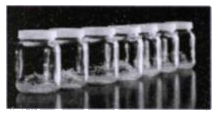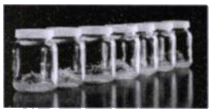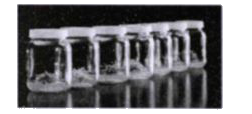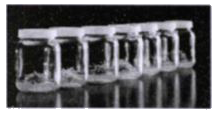The rate of increases of bacteria in a certain culture is proportional to the number present. If it doubles in 5 hr., then in 25 hr., its number would be
8 times the original
16 times the original
32 times the original
64 times the original
The correct Answer is:C
Step by step video, text & image solution for The rate of increases of bacteria in a certain culture is proportional to the number present. If it doubles in 5 hr., then in 25 hr., its number would be by Maths experts to help you in doubts & scoring excellent marks in Class 12 exams.
Updated on:21/07/2023Topper's Solved these Questions
- DIFFERENTIAL EQUATIONS BOOK - TARGET PUBLICATIONCHAPTER - DIFFERENTIAL EQUATIONS EXERCISE - COMPETITIVE THINKING
124 Videos
- DIFFERENTIAL EQUATIONS BOOK - TARGET PUBLICATIONCHAPTER - DIFFERENTIAL EQUATIONS EXERCISE - EVALUATION TEST
25 Videos
- DIFFERENTIAL EQUATIONS BOOK - TARGET PUBLICATIONCHAPTER - DIFFERENTIAL EQUATIONS EXERCISE - EVALUATION TEST
25 Videos
- DEFINITE INTEGRALSBOOK - TARGET PUBLICATIONCHAPTER - DEFINITE INTEGRALSEXERCISE - EVALUATIO TEST
30 Videos
- DIFFERENTIATION BOOK - TARGET PUBLICATIONCHAPTER - DIFFERENTIATION EXERCISE - EVALUATION TEST
30 Videos
Similar Questions
The rate of increase in the number of bacteria in a certain bacteria culture is proportional to the number present. Given the number triples in 5 hrs., find how many bacteria will be present after 10 hours. Also find the time necessary for the number of bacteria to be 10 times the number of initial present. [Given loge3=1.0986, e2.1972=9 ]
View SolutionThe rate of increase of the bacteria in a culture is proportional to the number of bacteria present and it is found that the number doubles in 6 hours. Prove that the bacteria becomes 8 times at the end of 18 hours.
View Solution
Knowledge Check
The rate of increase in the number of bacteria in a certain bacteria culture is proportional to the number present. If in 5 hrs the number triples, then in 10 hrs, the number of bacteria present is
A18 times the originalB12 times the originalC6 times the originalD9 times the originalThe rate of increase in the number of bacterai in a certain becteria culture is propotional to the number present at that time. If is found that the number doubles in 4 hours, then at the end of 12 hours, the number of bacteria are
A4 times the originalB6 time the originalC8 times the originalD10 times the originalRead the following text and answer the following questions on the basis of the same: The rate of increase in the number of bacteria in a certain bacteria culture is proportional to the number present. Given that the number triples in 5 hours.

The bacteria becomes 10 times in ___________ hours.A5log7B5log10log3C5log3Dlog(1053)
∫1Kxdx=_________ .
View SolutionRead the following text and answer the following questions on the basis of the same: The rate of increase in the number of bacteria in a certain bacteria culture is proportional to the number present. Given that the number triples in 5 hours.

The general solution is _________ .
View SolutionRead the following text and answer the following questions on the basis of the same: The rate of increase in the number of bacteria in a certain bacteria culture is proportional to the number present. Given that the number triples in 5 hours.

If 'N' is the number of bacteria, the corresponding differential equation is ____________ .
View SolutionRead the following text and answer the following questions on the basis of the same: The rate of increase in the number of bacteria in a certain bacteria culture is proportional to the number present. Given that the number triples in 5 hours.

If N0 is the initial count of bacteria, after 10 hours the count is __________ .
View SolutionThe rate of increase in the number of bacteria in a certain culture is propotional to the number present at that time. After 2 hours there are 600 bacteria and after 8 hours the count is 75000, then the population will be 200000 after
View Solution
